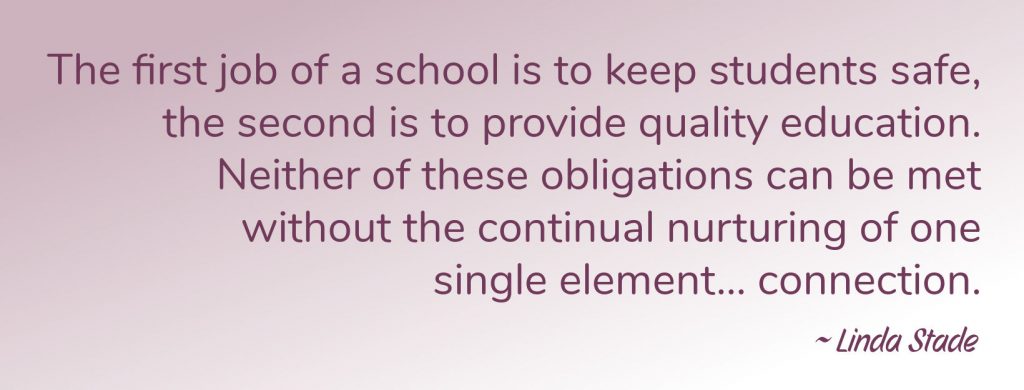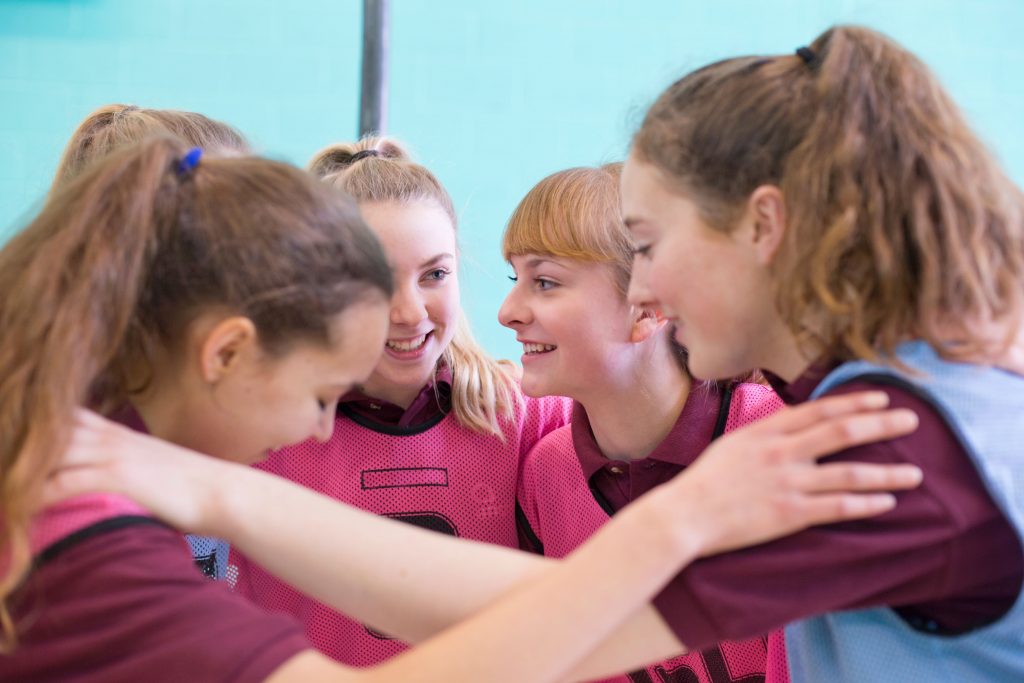I remember as a child picking mushrooms on our family farm. They magically appeared in the paddocks on sunny winter days. Armed with a knife and warm clothing we used to dodge fresh cow pats to gather ‘mushies’ for mum to make soup.
The mushrooms we picked looked nothing like those in the supermarket. They were all different shapes and colours. They definitely looked like individuals. What I didn’t realise then was that they were all connected.
Science tells us that underground, a ring of mushrooms is all growing from the same organism. Furthermore, underground those fungal fibres are also connected to surrounding trees and plants. They are part of a community, working together in order to improve the growth of all involved.
It’s a lovely image and one I’d like to apply to schools. Stay with me here!
If a school community is truly connected, the members are intertwined and growing together, we can expect much better learning and wellbeing for everyone, especially our kids. Together we do better!
Is your child connected to school?
A surprising number of kids say they are not connected to their school, including about 23.5% of Australian 15-year-olds! They aren’t necessarily the students you’d expect. Being ‘quietly disengaged’ is common and because it makes no fuss, we often don’t even see it. There is nothing ‘wrong’ with these kids, but their lack of connection is costing growth opportunities.
Students who do experience school connectedness:
- Like school
- Feel they belong
- Believe teachers care about them and their learning
- Believe that education matters
- Have friends at school
- Believe that discipline is fair
- Have opportunities to participate in extracurricular activities (Blum)
No child is going to feel this way every single day…because they’re human and subject to human ups and downs. However, for the majority of the time, do your kids feel supported and part of something bigger than themselves? Do they feel they are valued at school?
What are the benefits of school connectedness?
It is well documented that school connectedness gives our kids a number of advantages. For a start, they have the stability that allows them to relax and accept challenges. They are able to enter the emotional state called ‘flow’ where they feel engaged and purposeful. Here, greater learning is possible.
If a child is able to form connections that they believe are meaningful and long-lasting with a wide variety of peers and adults, they are more likely to carry these positive bonding behaviours into their future relationships and communities. They are also more likely to perceive themselves as competent, trustworthy, and likeable.
Lourdes Hill College clinical psychologist, Kristina Morgan says, “Kids who are connected deeply and widely at school have greater resilience, stability, and strength. They are less vulnerable to the opinions and pressure of a few friends and what they see on social media.”
Research also tells us that students who feel connected to school, regardless of how they are faring academically, are less likely to participate in behaviours that will harm themselves or others, for example, substance abuse, bullying, or violence. They are also less likely to experience emotional distress or suicidal thoughts.
It pays to be connected!
Choose a school where connection matters
Some schools are excellent at building connectedness. You can hear it in the corridors and feel it in the air at a school assembly. In classes, there is a comfortable flow of learning, and kids are glad to be there.
In choosing a school that values connectedness, look for:
- A clear articulation of values that are aligned with those of your family
- Structures that create community (Eg. A strong House system)
- Staff who prioritise relationships in their teaching
- Strong partnerships between home and school
- Rituals that draw the community together and make students feel part of something bigger than themselves
- Clear boundaries and guidelines for students to follow so that they know what the expectations are and experience stability
How can we help build connectedness from home?
It isn’t all up to schools. Relationships run both ways and students and their families contribute to the dynamic that generates the warm buzz of connectedness. Here are three ways you can help build your child’s connection to school.
1. Support your child’s relationship with the school
If we want our kids to engage with school and foster a sense of belonging, they must first value their school and education. A child’s attitude to school is often a reflection of their parents’ attitudes. Speak positively about school and teachers. If there is a problem, work with the school instead of against it.
2. Encourage co-curricular participation
Co-curricular activities give your child an opportunity to interact with students of different age groups who have the same interests as them. It allows them to build wide social networks. They also get the opportunity to show different facets of their personality and see other students and teachers in a new light.
3. Teach relationship skills
We cannot assume that our children have the social and emotional skills required to make and maintain relationships. They need you to teach and model those skills. Then they need you as a coach on the sidelines. If necessary, work with the school to develop strategies and encourage your child to access the people in place to support them.
Final thought…
The longer I work in schools, the more I am convinced that education is all about relationships and the key to feeling good about school is connection. All kids need to be encouraged to plug into the vibrant organism that is school. After all, we could all do with a little support along the way.
This article was written by Linda Stade and first published on Lourdes Hill College’s blog, Inspiring Girls









